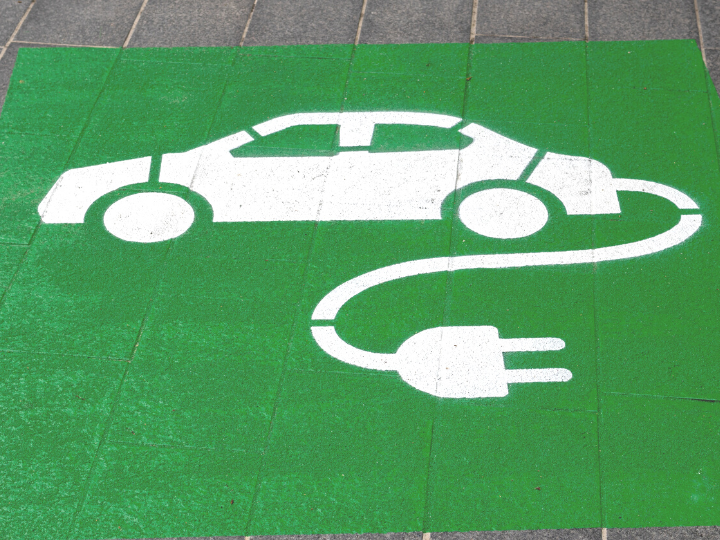by Martin Banks
The massive infrastructure needed for electric vehicles is still inadequate in most EU countries, a major transport conference has been told.
It heard that the charging stations for electric cars take up “much more” space than conventional petrol filling stations.
But Joao Caetano, of the Portuguese Institute for Mobility and Transport, told the event that the necessary infrastructure was still absent in most countries.
He said, “Charging stations must be built separately to deliver the electricity for these charging stations but this takes up large amounts of space.”
He asked “My question is: where, currently, is the infrastructure for these charging stations? How much space will be needed for them? There is, currently, no answer to these questions.”
“One thing I do know, though,is that none of this will be possible with public and private partnership.Despite the increase in energy efficiency, this is not sufficient to cover the huge number of kilometres people are travelling,” explained Caetano.
At the same time, transport infrastructure is now facing new challenges and opportunities from energy transition and digitalization. “I don’t think digitalisation is the fundamental change we need, decarbonisation is. If you leave the system as it is and digitalise it, emissions will still grow, so decarbonisation is the key,” concluded Caetano.
The Transport Research Arena (TRA) conference has gathered experts from around the world in Lisbon to discuss the foremost challenges on the path to decarbonise transport by 2050, in line with the goals set by the European Green Deal of making Europe the first carbon neutral continent.
On the third day, infrastructure was in the spotlight. Building on the concerns expressed on Monday about transport infrastructure not being able to keep up with the technological advancements that can support the sector’s green transition, the experts revealed the most difficult obstacles that have to be overcome and put forward some solutions
The comments by Caetano, at a session on “innovative infrastructure for Europe 2030”, were partly echoed by other speakers.
Alasdair Cain, a senior researcher, also called for public/ private partnership investment in order to develop the necessary infrastructure.
Traffic on Europe’s roads and railways is increasing while much of the continent’s transport infrastructure is ageing and facing new climate-related challenges. The Covid-19 pandemic didn’t help. “Coming out of this pandemic, the way in which transport and urban areas are used, has fundamentally changed. People started working remotely more, so the car has become the most desirable mode of travelling in a post covid world,” he said.
Cain said, “We must make sure we do not operate in our own little silos on this. A multi-discipline approach is needed and we must not have lots of competing infrastructures.”
Another speaker in the session on Wednesday, Bo Olsson, chief strategist at Trafikverket, told the packed audience, “I agree that we all have to work together on this issue.
“Our company is already investing in this area and everyone must play their part.We have to join forces both in terms of money, resources and people.”
Also speaking, Dirk Beckers, of the European Climate, Infrastructure and Environment Executive Agency, told the conference, “The public sector cannot finance everything when it comes to the infrastructure needed for the EU to meet its climate related objectives.
“The EU is taking care of what it needs to do but, yes, there is a need for very intensive cooperation on this.”
"We need to accelerate the transfer from road to rail and boat, which we believe is the best short-term solution for reducing CO2 emissions. It is not the final solution, but it is a step in the right direction,” flagged Pietro D’Arpa, Vice-president Supply Chain Procter & Gamble Europe.
Separately, the Transport Research Agenda (TRA) conference in Lisbon was told how ports and airports are helping to contribute to the EU’s climate goals which include reducing emissions by as much as 90 per cent by the year 2030.
A session entitled “sustainable ports and airport” was told there are five “Green Deal” projects,including one at the Port of Antwerp in Belgium, which are “statd of the art innovations.”
It was said that each are contributing to the EU’s Green Deal but that there were “still opportunities yet to be exploited.”
The projects cited contribute in terms of energy storage, waste heat recovery, reducing noise emissions,improving air quality and in the use of alternative fuels.
The EU has, it was said, contributed some €125m to the “Green Deal Ports and Airports” programming.
Rosalinde van der Viies, a director of the Clean Planet Directorate in the commission’s Research and Innovation DG, told the session, “Ports and airports can make a huge contribution and will be crucial in the transition to a carbon free society.”
The 4 day conference has attacted over 2,000 people from the world of research, policy and academia and concluded on Thursday.




 By: N. Peter Kramer
By: N. Peter Kramer

